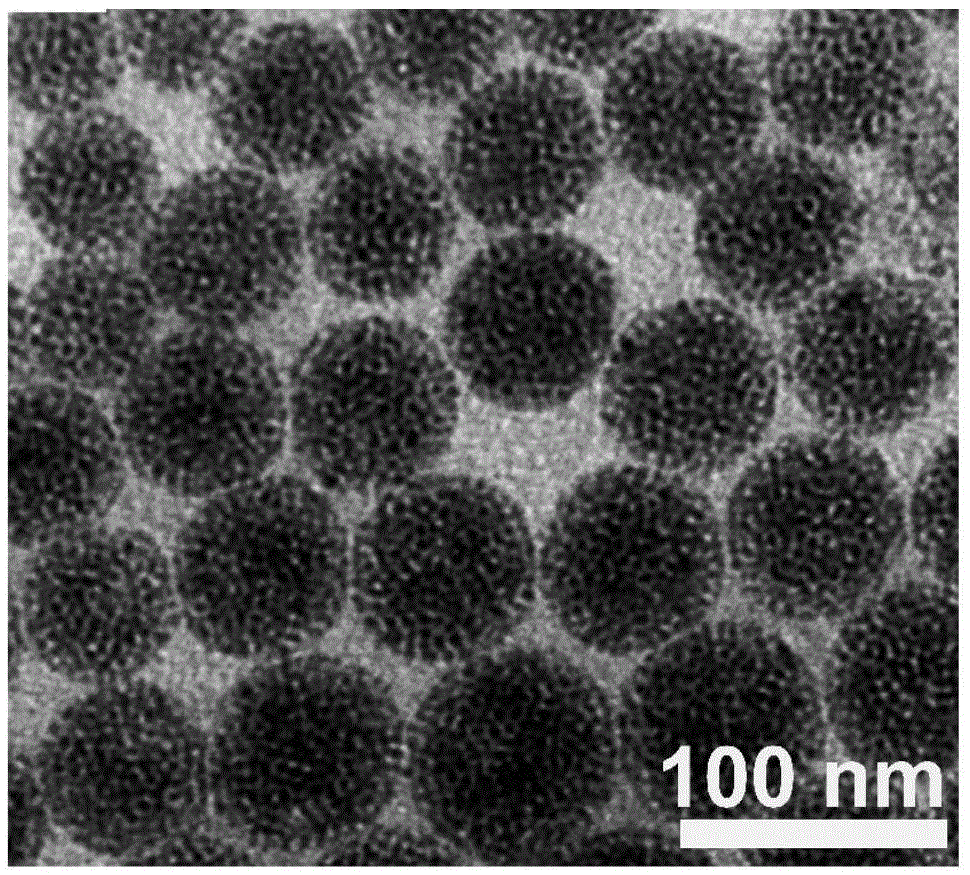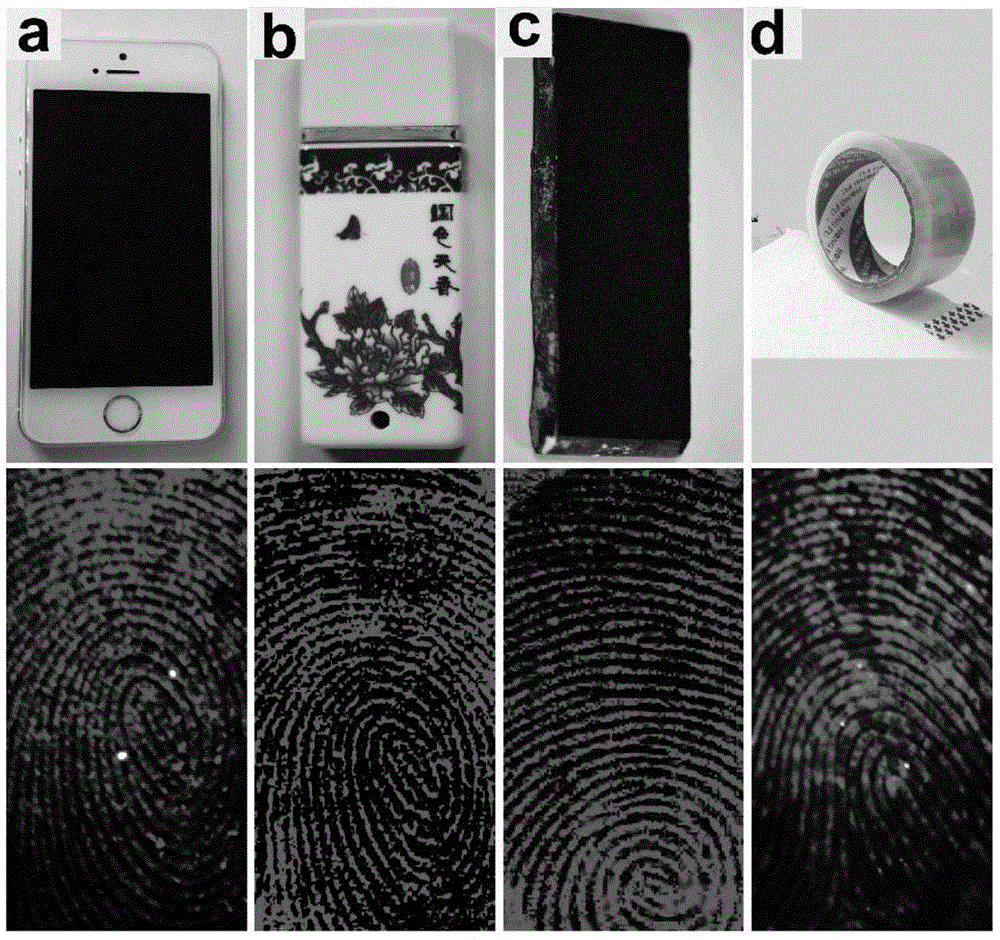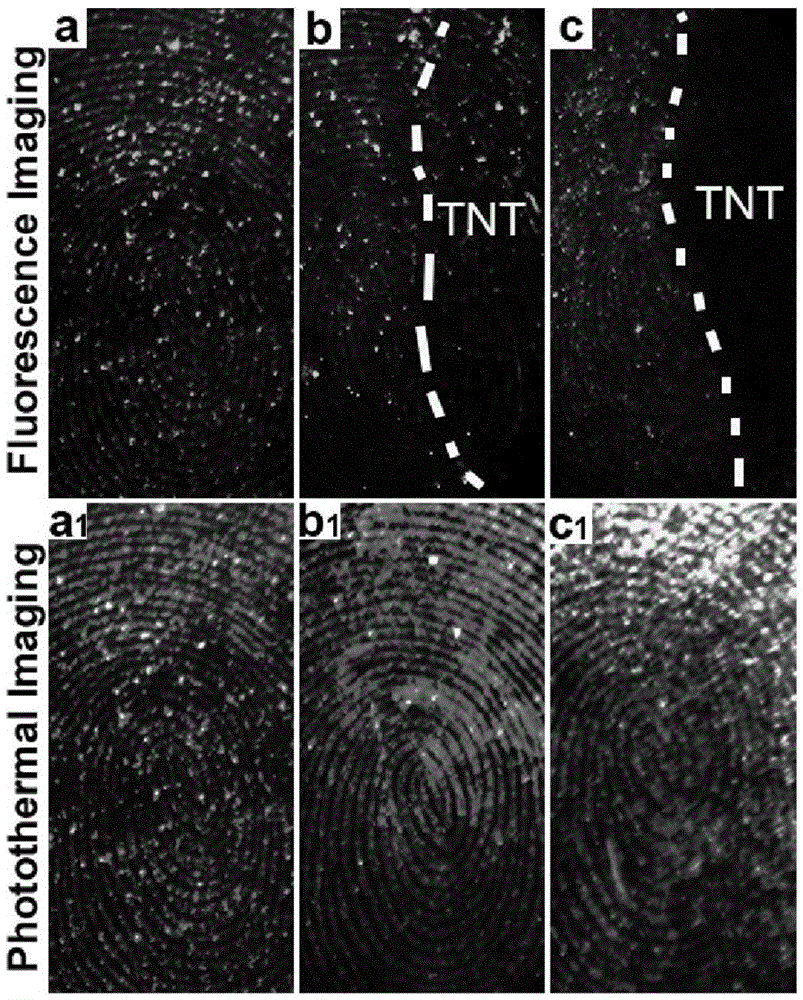Cu2-xS self-doped semiconductor optothermal material and application thereof to invisible fingerprint imaging
An invisible fingerprint, cu2-xs technology, used in nanotechnology, application, medical science and other directions for materials and surface science, can solve the problem that hydrophobic nanoparticles are not suitable for binding fingerprints, and have not been used in invisible fingerprint photothermal imaging, etc. problem, to achieve the effect of eliminating interference
- Summary
- Abstract
- Description
- Claims
- Application Information
AI Technical Summary
Problems solved by technology
Method used
Image
Examples
Embodiment 1
[0015] a. Take Cu dispersed in chloroform 2-x S nanoparticles, x = 0.25, where Cu 2-x The content of S nanoparticles is 9.6mg, mixed with 4.5mg allyl thiol and dispersed in 1mL chloroform, after stirring for 30min, add 70μLAIBN (0.5mg / mL); then add 10mL SDS aqueous solution (1.8mg / mL), ice bath After ultrasonication for 3min, irradiate with 365nm light for 10min and stir overnight at room temperature, after centrifugal purification, disperse in 2mL ultrapure water to obtain Cu-based 2-x S self-doping semiconductor photothermal material dispersion;
[0016] b. After aging the fingerprint sample at 30°C for 48 hours, add 200 μL of the Cu-based 2-x S self-doped semiconductor photothermal material dispersion, incubate at room temperature for 3 minutes and remove excess liquid.
[0017] c. Under near-infrared light irradiation, with the help of a near-infrared imager, the imaging of invisible fingerprints is realized.
Embodiment 2
[0019] Based on the Cu that step b adds among the embodiment 1 2-x S self-doping semiconductor photothermal material dispersion was replaced by Cu with a volume ratio of 1:1 2-x Mixed solution obtained from S self-doped semiconductor photothermal material dispersion and CdSeZnS quantum dot dispersion, Cu 2-x The mass ratio of S self-doping semiconductor photothermal material to CdSeZnS quantum dots is 1:1, which can realize the imaging of invisible fingerprints containing 2,4,6-trinitrotoluene explosive residues.
PUM
 Login to View More
Login to View More Abstract
Description
Claims
Application Information
 Login to View More
Login to View More - R&D
- Intellectual Property
- Life Sciences
- Materials
- Tech Scout
- Unparalleled Data Quality
- Higher Quality Content
- 60% Fewer Hallucinations
Browse by: Latest US Patents, China's latest patents, Technical Efficacy Thesaurus, Application Domain, Technology Topic, Popular Technical Reports.
© 2025 PatSnap. All rights reserved.Legal|Privacy policy|Modern Slavery Act Transparency Statement|Sitemap|About US| Contact US: help@patsnap.com



